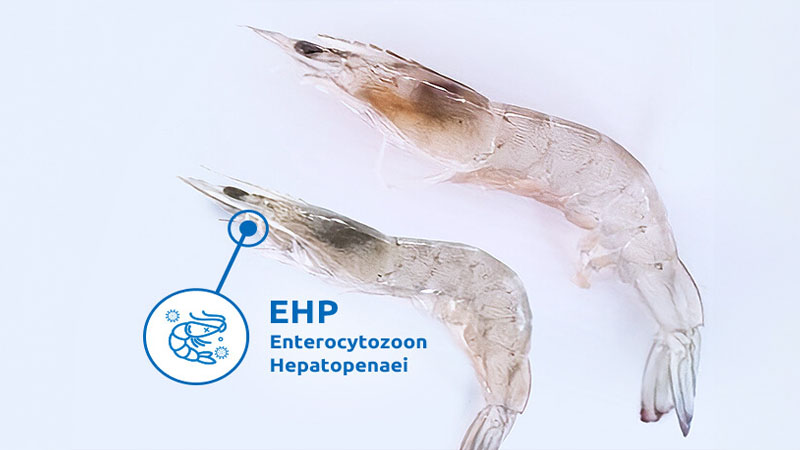Exclusive content

The microsporidian Enterocytozoon hepatopenaei (EHP) continues to pose a significant threat to shrimp health on a global scale. Severe EHP infections not only stunt shrimp growth but also heighten vulnerability to opportunistic infections, affecting shrimp populations worldwide.
Unveiling the Mechanism
Recent studies have shed light on a crucial component of EHP’s lifecycle: the polar tube protein 2 (EhPTP2). Through a proteomic approach, researchers identified EhPTP2 as abundantly present in protein extracts obtained from extruded spores, suggesting its role in the infection process.
Immunohistochemistry using an immunofluorescent antibody against EhPTP2 revealed the presence of extruded spores in the shrimp hepatopancreas (HP) and intestine, with notable absence in the stomach. This led to the hypothesis that EhPTP2 might be essential for successful EHP spore extrusion.
Targeting EhPTP2 with dsRNA
To test this hypothesis, researchers injected EhPTP2-specific double-stranded RNA (dsRNA) into infected shrimp. The results were significant: a notable reduction in EHP copy numbers in infected shrimp was observed. This reduction indicated a decrease in the amplification of EHP-infected cells in the HP by spores released from previously infected cells.
Moreover, injecting dsRNA into EHP-infected shrimp prior to their interaction with naïve shrimp significantly reduced the rate of EHP transmission. These findings highlight the pivotal role of EhPTP2 in the life cycle of EHP and demonstrate the effectiveness of targeting EHP mRNA with dsRNA as a potential preventative measure.
Conclusion
The discovery of EhPTP2 as a critical player in EHP’s lifecycle opens doors for future investigations into identifying genes crucial for EHP survival and spread. These findings pave the way for the development of preventative and therapeutic measures aimed at safeguarding shrimp health and mitigating the impact of EHP infections in shrimp populations worldwide.